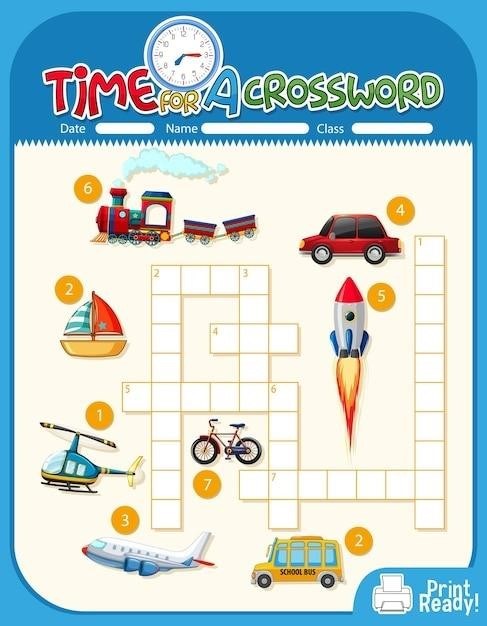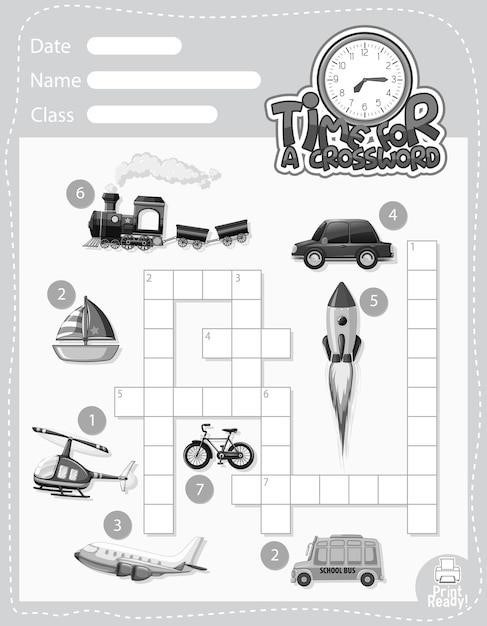Velocity and acceleration are fundamental concepts in physics, describing the motion of objects. A velocity worksheet with answers is a valuable tool for students to practice solving problems related to these concepts. These worksheets typically include various scenarios involving objects moving at different speeds and directions, allowing students to apply the formulas for velocity and acceleration to calculate unknown quantities. The worksheets often feature a combination of theoretical questions, numerical problems, and graphical representations to provide a comprehensive understanding of these concepts.
Introduction
Velocity and acceleration are fundamental concepts in physics that describe the motion of objects. Understanding these concepts is essential for comprehending various physical phenomena, from the movement of planets in space to the motion of cars on the road. A velocity and acceleration worksheet with answers serves as an effective tool for students to reinforce their understanding of these key concepts. By working through a variety of problems, students can practice applying the formulas for velocity and acceleration, calculating unknown quantities, and interpreting the results. These worksheets provide a structured and interactive learning experience, allowing students to develop their problem-solving skills and deepen their knowledge of motion.
Key Concepts
A velocity and acceleration worksheet with answers typically focuses on two key concepts⁚ velocity and acceleration. Velocity is a vector quantity that describes the rate of change of an object’s position with respect to time. It involves both magnitude (speed) and direction. Acceleration, on the other hand, is the rate of change of velocity over time. It is also a vector quantity, meaning it has both magnitude and direction. The relationship between velocity and acceleration is that acceleration represents the change in an object’s velocity. A positive acceleration indicates an increase in velocity, while a negative acceleration indicates a decrease in velocity. The worksheet might include problems involving constant velocity, uniform acceleration, and non-uniform acceleration, providing students with a comprehensive understanding of these concepts and their application in real-world scenarios.
Velocity
The concept of velocity is a crucial part of any velocity and acceleration worksheet. Velocity is a vector quantity, meaning it has both magnitude and direction. The magnitude of velocity is known as speed, which represents how fast an object is moving. The direction indicates the path the object is taking. Velocity can be represented mathematically as a vector, typically denoted by “v,” and its units are usually expressed as meters per second (m/s) or kilometers per hour (km/h). A velocity worksheet might include problems where students need to calculate the velocity of an object given its displacement and time, or determine the displacement of an object given its velocity and time. These problems often involve scenarios where objects move at constant velocity or experience a change in velocity over time.
Acceleration
Acceleration is another key concept addressed in velocity and acceleration worksheets. It refers to the rate at which an object’s velocity changes over time. Acceleration is also a vector quantity, meaning it has both magnitude and direction. The magnitude of acceleration indicates how quickly the velocity is changing, while the direction specifies whether the object is speeding up (positive acceleration) or slowing down (negative acceleration, also known as deceleration). The units of acceleration are typically expressed as meters per second squared (m/s²). Velocity and acceleration worksheets often present problems where students need to calculate the acceleration of an object given its initial and final velocities and the time interval over which the change occurs; They might also explore scenarios involving constant acceleration or varying acceleration, requiring students to apply the appropriate formulas to determine the unknown quantities.
Types of Problems
Velocity and acceleration worksheets encompass a variety of problem types to test students’ understanding of these concepts. Some common problem types include⁚
- Speed Calculations⁚ These problems involve determining the speed of an object given its distance traveled and the time taken. Students may be required to apply the formula speed = distance/time to solve these problems.
- Velocity Problems⁚ These problems go beyond speed and consider the direction of motion. Students might be asked to calculate the velocity of an object given its displacement and the time taken, or they might need to find the displacement of an object given its velocity and time.
- Acceleration Problems⁚ These problems involve calculating the acceleration of an object given its initial and final velocities and the time interval. Students may also encounter problems where they need to determine the final velocity of an object given its initial velocity, acceleration, and time.
- Graphing Velocity and Acceleration⁚ These problems involve interpreting graphs that represent the velocity or acceleration of an object over time. Students may need to analyze the slope of the graph to determine the acceleration, or they might need to calculate the area under the curve to find the displacement.
These types of problems provide a comprehensive assessment of students’ ability to apply the concepts of velocity and acceleration to real-world scenarios.
Sample Problems
Velocity and acceleration worksheets often feature sample problems to guide students through the process of solving these types of questions. Here are a few examples of common sample problems that might be found on such a worksheet⁚
- Problem 1⁚ A car travels 100 kilometers in 2 hours. What is its average speed?
- Problem 2⁚ A plane flies 500 miles east in 1.5 hours. What is its velocity?
- Problem 3⁚ A bicycle accelerates from rest to a speed of 10 meters per second in 5 seconds. What is its acceleration?
- Problem 4⁚ A ball is thrown vertically upwards with an initial velocity of 20 meters per second. What is its velocity after 3 seconds?
- Problem 5⁚ A graph shows the velocity of a car over time. What is the car’s acceleration between the time intervals of 2 seconds and 5 seconds?
These sample problems provide a practical framework for students to understand how to apply the formulas for velocity and acceleration in different scenarios. The answers to these problems are usually included on the worksheet to enable self-assessment and learning.
Speed Calculations
Speed calculations are a fundamental part of velocity and acceleration worksheets. They involve determining the rate at which an object moves, often expressed in units like meters per second (m/s) or kilometers per hour (km/h). These worksheets commonly include problems that require students to calculate speed using the formula⁚
Speed = Distance / Time
For instance, a problem might ask⁚ “A car travels 120 kilometers in 2 hours. What is its average speed?” To solve this, students would apply the formula⁚
Speed = 120 km / 2 hours = 60 km/h
Speed calculations often involve understanding the relationship between distance, time, and speed. Worksheets may also incorporate scenarios where students need to convert between different units of measurement, such as converting kilometers to meters or hours to seconds, ensuring a comprehensive understanding of the concept.
Velocity Problems
Velocity problems on worksheets delve deeper than simple speed calculations, introducing the concept of direction. Velocity is a vector quantity, meaning it has both magnitude (speed) and direction. Velocity problems often involve scenarios where objects are moving in specific directions, requiring students to consider both speed and direction when calculating velocity.
For example, a problem might ask⁚ “A car travels 20 meters east in 5 seconds. What is its velocity?” To solve this, students would first calculate the speed⁚ 20 meters / 5 seconds = 4 m/s. Then, they would include the direction, resulting in a velocity of 4 m/s east.
Velocity problems often involve analyzing the motion of objects along a straight line or curved paths. They may also include scenarios where objects change direction, requiring students to consider the change in velocity and calculate the average velocity over a specific time interval. These problems help students develop a deeper understanding of the relationship between speed, direction, and velocity.
Acceleration Problems
Acceleration problems on worksheets challenge students to apply the concept of acceleration, which describes how an object’s velocity changes over time. These problems often involve situations where an object’s speed or direction is changing, requiring students to calculate the acceleration using the formula⁚ acceleration = (final velocity ⏤ initial velocity) / time.
For instance, a problem might ask⁚ “A car accelerates from rest to 20 m/s in 5 seconds. What is its acceleration?” To solve this, students would use the given information⁚ initial velocity = 0 m/s, final velocity = 20 m/s, and time = 5 seconds. Plugging these values into the formula, they would get⁚ acceleration = (20 m/s ー 0 m/s) / 5 seconds = 4 m/s².
Acceleration problems often explore scenarios where objects are speeding up, slowing down, or changing direction. They may also involve analyzing motion graphs to determine acceleration at different points in time. By solving these problems, students develop a deeper understanding of the relationship between velocity, time, and acceleration, gaining valuable insights into the dynamics of motion.
Graphing Velocity and Acceleration

Graphing velocity and acceleration is a crucial skill in understanding motion. Velocity-time graphs depict the relationship between an object’s velocity and time, while acceleration-time graphs illustrate the change in acceleration over time. Worksheets often incorporate these graphs to help students visualize and analyze motion.
For instance, a velocity-time graph might show a straight line, indicating constant velocity. A curved line represents changing velocity. The slope of the line on a velocity-time graph represents the acceleration. A positive slope indicates acceleration, while a negative slope signifies deceleration.
Acceleration-time graphs can be used to determine the change in velocity over a specific time interval. A horizontal line indicates constant acceleration, while a sloping line indicates changing acceleration. By analyzing these graphs, students can gain a deeper understanding of how velocity and acceleration are interconnected, making it easier to interpret and solve problems related to motion.
Applications of Velocity and Acceleration
Velocity and acceleration are not just theoretical concepts; they have practical applications in numerous real-world scenarios. Understanding these concepts is crucial in fields such as engineering, transportation, and sports. Velocity and acceleration worksheets help students grasp these applications and see how these principles impact everyday life.
For example, engineers use velocity and acceleration calculations to design vehicles and ensure their safe and efficient operation. Transportation systems rely on these concepts to optimize traffic flow and ensure the smooth movement of people and goods. In sports, athletes use velocity and acceleration to improve performance, such as in sprinting, throwing, or jumping.
By working through problems on velocity and acceleration worksheets, students develop a deeper understanding of how these concepts apply to real-world situations, enhancing their ability to analyze and solve complex problems related to motion.
Velocity and acceleration worksheets are essential tools for students to solidify their understanding of these fundamental concepts in physics. By working through various problems, students develop a deeper comprehension of the relationships between distance, time, speed, velocity, and acceleration. These worksheets provide a structured and engaging way to practice applying formulas, analyzing data, and interpreting graphical representations of motion.
The practical applications of velocity and acceleration extend beyond the classroom, impacting various fields such as engineering, transportation, and sports. Through these worksheets, students can gain valuable insights into how these concepts shape our world and contribute to advancements in technology and human achievement.
By mastering the concepts of velocity and acceleration, students develop a solid foundation for further exploration in physics and related fields, opening doors to a deeper understanding of the world around them.
